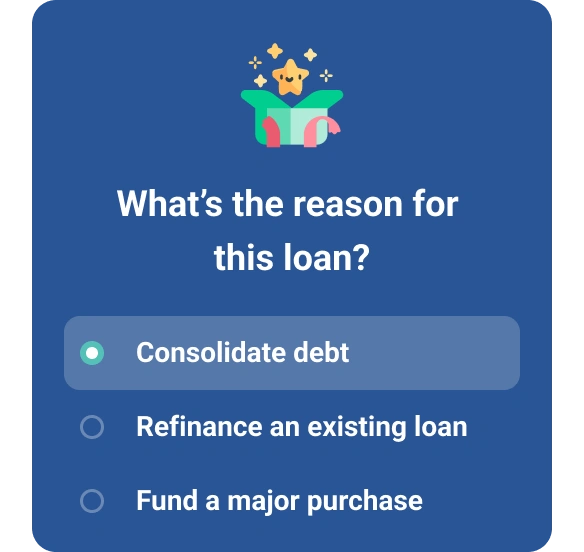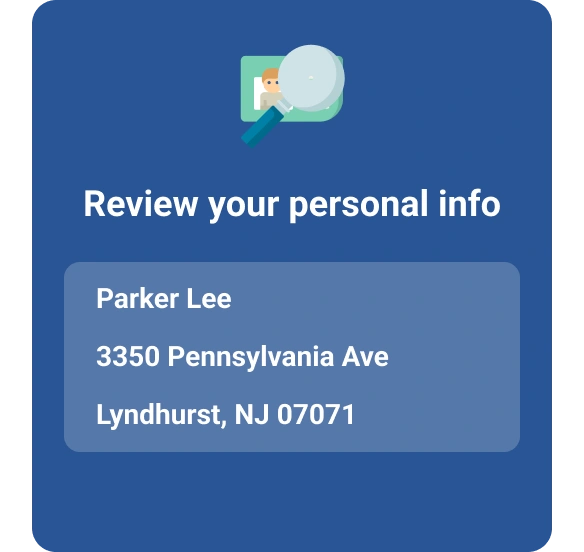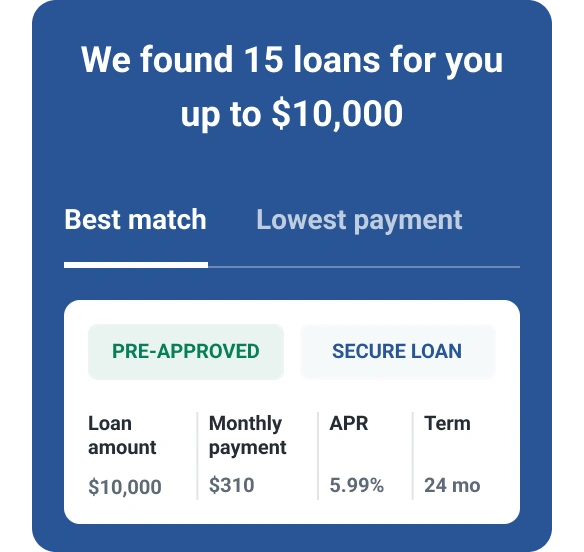HELOC vs. Personal Loan: What’s the Difference?

A home equity line of credit (HELOC) is a revolving credit line secured by home equity, while a personal loan is a lump-sum installment loan that's typically unsecured. Each can offer a way to help you obtain funds when you need to borrow money. When deciding between the two, consider how much money you need, the risk each type of loan presents and how you plan to use the funds.
| HELOC | Personal Loan | |
|---|---|---|
| Collateral? | Your home | None for unsecured loans |
| Loan limits | Up to 85% of your home equity | Typically $50,000, but may go up to $100,000 |
| Interest rates | Typically variable, 7.68%-8.08%* | Typically fixed, 10.75%-12.03%* |
| Fees | Closing costs of 2%-5% of amount borrowed; may charge origination and other fees | No closing costs; may charge origination and other fees |
| Repayment timeline | 25-30 years | 1-7 years |
*Source: National Credit Union Administration data as of Q1 2025
What Is a HELOC?
A HELOC is a revolving line of credit or second mortgage that uses your home as collateral. You usually need at least 15% to 20% equity to qualify. Your home's appraised value helps to determine how much you can borrow; your creditworthiness is also a factor. Typically, you can borrow up to 85% of your home equity.
Example: If you have $100,000 in equity in your home, you might qualify for a HELOC of up to $85,000.
HELOCs generally have an initial five- to 10-year draw period. During this time, you can borrow against your credit limit and make interest-only payments on what you borrow. When the draw period ends, you repay the loan plus interest, usually over 20 years. Some HELOCs have a balloon payment, meaning the full amount borrowed must be paid immediately after the draw period ends.
Learn more: How Does HELOC Repayment Work?
Pros and Cons of a HELOC
HELOCs come with both benefits and disadvantages to consider.
Pros
-
Large loan amounts: Depending on your home equity and other factors, you might be able to borrow $100,000 or more.
-
Typically lower interest rates: Because they're secured loans, HELOCs usually have lower interest rates than personal loans or credit cards.
-
Flexible borrowing options: You can borrow only what you need, when you need it, rather than having to borrow a large lump sum all at once.
-
Low monthly payments during draw period: Interest-only payments during the draw period can help stretch your budget.
-
Potential tax breaks: Interest paid on a HELOC used for major home improvements may be tax deductible.
Cons
-
Payments can fluctuate: Although fixed-rate HELOCs exist, many HELOCs have variable interest rates, so payments may change.
-
Slow approval process: HELOCs require a home appraisal; loan approval can take two to six weeks or more.
-
Fees add to cost of borrowing: HELOC closing costs are typically 2% to 5% of the loan amount; there may be other fees too.
-
Payments jump after draw period: Payments rise substantially when you start repaying principal. If your HELOC has a balloon payment, you'll need to pay off the loan in a lump sum.
-
Reduces your home equity: A HELOC eats into your home equity and prolongs the time needed to pay off your mortgage. If home values drop, you could end up owing more than your home is worth.
-
Puts your home at risk: Using your home as collateral means you could face foreclosure if you default.
Learn more: Is a HELOC a Good Idea?
What Is a Personal Loan?
Personal loans are installment loans that you receive as a lump sum and repay in fixed monthly installments. Repayment terms usually range from one to seven years. Most personal loans are unsecured, so your creditworthiness largely determines your loan amount and interest rate. Whether secured or unsecured, personal loans usually have higher interest rates than HELOCs but lower interest rates than credit cards.
Personal loan amounts generally range from $1,000 to $50,000, but some lenders offer personal loans for $100,000 or more. You can typically use personal loans for any purpose, including emergency expenses, medical bills, consolidating high-interest debts or making home improvements.
Pros and Cons of a Personal Loan
Before applying for a personal loan, be aware of their upsides and downsides.
Pros
-
No collateral needed: You don't need home equity to get a personal loan, and your assets aren't at risk.
-
Potentially lower interest rate: The average annual percentage rate (APR) for a 24-month personal loan was 11.66%, compared to an average APR of 21.91% for credit cards, according to February 2025 Federal Reserve data.
-
Fixed interest rate: Personal loans usually have fixed interest rates and predictable payments.
-
Quick funding: If approved for a personal loan, you'll typically get your money within a week, or even the same day.
Cons
-
No tax advantages: Interest paid on a personal loan isn't tax deductible.
-
Potentially high interest rate: Personal loan interest rates can be 36% or more. Although you can usually get an unsecured personal loan if your credit score is at least 580, you'll typically need a score of 700 or more to qualify for the best interest rates.
-
May involve fees: Lenders may charge application, origination, late and other fees for personal loans. Origination fees are typically 2% to 5% of the amount you borrow, comparable to HELOC closing costs.
-
Adds to your debt: Increasing your debt could negatively impact your credit score if you have trouble making payments. Additional debt increases your debt-to-income ratio (DTI), which can make it harder to qualify for other loans.
Learn more: Personal Loan Requirements to Know Before You Apply
HELOC vs. Personal Loan
Both HELOCs and personal loans can help you finance major expenses, but there are some important differences between them.
A HELOC offers flexible borrowing options with a lengthy repayment timeline, while a personal loan provides a lump-sum payout and a short repayment term. HELOCs typically charge closing costs, have variable interest rates and take longer to fund than personal loans. Most personal loans have fixed interest rates and funds are usually issued within a week of loan approval.
The biggest difference between HELOCs and personal loans is that HELOCs are secured by your home equity. If you fail to make payments, you could lose your home. Personal loans usually don't require collateral, making them accessible to more people and reducing the borrower's risk.
Tip: Use an APR calculator to easily compare the costs of different loans.
Should You Get a HELOC or a Personal Loan?
Whether to get a HELOC or a personal loan depends on your financial situation, your plans for the loan and other factors. You may even find that an alternative option is better for your needs.
When to Get a HELOC
It could be best to get a HELOC if:
- You have ample home equity. This gives you more wiggle room to borrow what you need without sacrificing too much of your hard-built equity.
- You intend to make home improvements. Interest on the HELOC could be tax deductible if the funds are used to "substantially improve" your home.
- You're planning a long-term project. Major home improvements are often completed in stages, and you may not know exactly how much you need when you start out. A HELOC lets you draw money as needed and only pay for what you've borrowed.
- You prefer a longer repayment term. Be sure you understand the loan terms and can budget for larger payments when the draw period is over. Otherwise, you risk losing your home.
Tip: Using a HELOC to prep your home for sale could help you command a higher price. You can then use proceeds from the sale to pay off the HELOC.
Learn more: How to Get a HELOC
When to Get a Personal Loan
A personal loan might make more sense if:
- You need to fund a one-time expense. If you need a specific amount of money all at once, a personal loan may be a better fit.
- You want to consolidate debt. Interest rates are usually much lower for personal loans than credit cards, making them a popular option for paying off high-interest credit card debt.
- You have good credit. You'll need good credit to qualify for the lowest interest rates on an unsecured personal loan.
- You don't want to use your home as collateral. Failing to repay a personal loan will damage your credit score, but won't cost you your home.
Learn more: How to Get a Personal Loan: A Step-by-Step Guide
Alternatives to HELOCs and Personal Loans
Other loans could be better options than a HELOC or personal loan depending on your situation.
- Credit cards: Some cards offer new cardholders introductory 0% interest rates on purchases or balance transfers, often for 12 to 21 months. This allows you to make a large purchase or pay off high-interest credit card balances and accrue no interest during the promotional period.
- Personal line of credit: Like a HELOC, a personal line of credit allows you to draw money as needed and only pay interest when you borrow money. However, it's unsecured, so you don't need home equity to qualify and you won't risk losing your home.
- Cash-out refinancing: With a cash-out refi, you'll refinance your mortgage with a larger loan and keep the difference in cash. Ideally, you'll also lower your mortgage's interest rate in the process.
Learn more: Pros and Cons of a Cash-Out Refinance
The Bottom Line
Whether you're looking for a HELOC, personal loan or other form of financing, your credit score plays a major role in determining your eligibility and interest rate. Improving your score before applying for a loan may help you get more favorable terms. Check your FICO® ScoreΘ for free with Experian and you'll get insights into which factors most impact on your score.
Need a personal loan?
Whether you're looking to eliminate debt or access cash fast, compare personal loan offers matched to your credit profile.
Start now for freeAbout the author
Karen Axelton specializes in writing about business and entrepreneurship. She has created content for companies including American Express, Bank of America, MetLife, Amazon, Cox Media, Intel, Intuit, Microsoft and Xerox.
Read more from Karen

